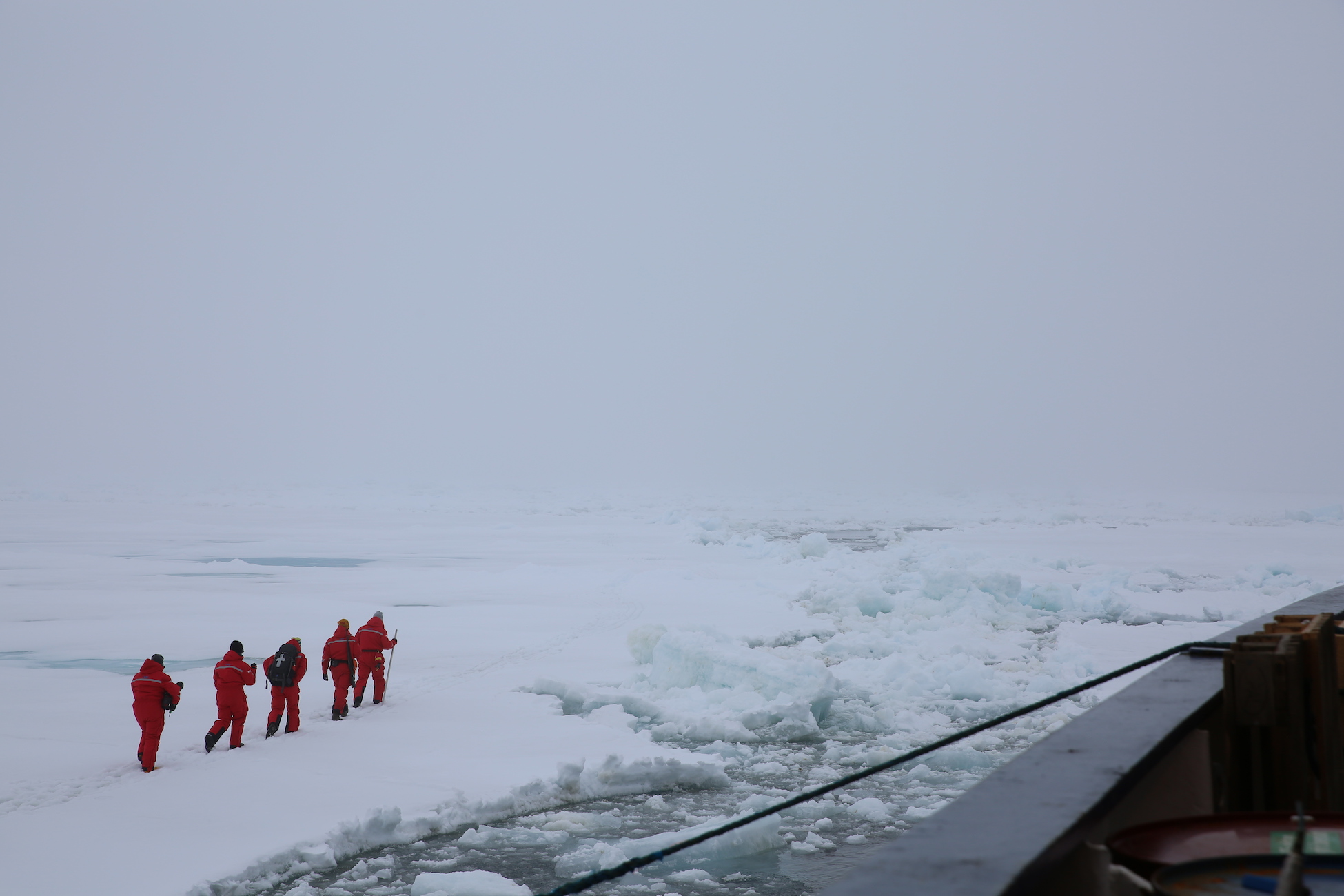by Matthew Shupe, CIRES/NOAA scientist and co-coordinator of MOSAiC
Today we parked against the MOSAiC floe, just outside the Fortress on a large shoulder of first year ice. An overcast day with little contrast, but generally warm out. It was a day for exploration, for assessing the state of the floe. Two teams were assembled to head out in different directions to make ice thickness measurements, one on our Fortress floe and one to an adjacent floe. And today showed an interesting feature of Leg 4; that is the strong role of women. Our teams today included one of 3 women and another with 3 women and 1 man. In general on this leg we have many women including some extraordinary leaders. These teams headed out late morning. Mid-day another group journeyed out as well, including Markus and I to look for conditions that might be appropriate for mooring Polarstern for the next 3+ months. Our tour traversed the perimeter of the Fortress floe in a counterclockwise direction. The new character of this floe revealed itself in the first steps. Schlump, schlump. Through shin-deep snow into a blue slush below. Most steps were this way for our full 3-hour tour. The snow has clearly melted somewhat, with large grains now. Uneven surface below the snow surface, not always revealed at the top. So it was never certain how deep your step would go. Would it land on a little block of ice with stability? Or would it just sink, down into the knee ending in a splash? So many layers embedded below the surface. Alli and Melinda mentioned this structure from their drilling. Different layers of ice with intervening melt water layers, possibly some inundation with sea water… all of this above a thicker layer of more uniform ice that is 160cm thick.

Along our journey there were some tremendous sights. This floe is ringed by a rubble field in most directions, some of it created by Polarstern when it left back in mid-May. There were also some large ridges that had then opened into leads leaving large ice blocks up-ended and exposed on their shores. Blackness in the ocean of the leads, and deep blue of the exposed blocks. Such a proper blue, perhaps this is even the definition of blue. Extending into the floe from the edges is some distance of flat-ish ice, up until the inner ridged walls of the Fortress. These are open fields of snow, and it is clear, although faint, that melt ponds are starting to find some definition in these areas, although still blanketed by a layer of snow. And it is dirty all around. Brownish in places. It is not clear what makes the surface brown. Sediment? Algae? If the former, why would it be on the surface of the snow? Lose inspection didn’t clarify much, although it looks like some small pebbles. But also some small particles that could be slightly greenish…. Maybe the eye plays tricks. Extending our tour around to the north I was able to see our flux station with bare eyes, standing out in the distance beyond an extensive field of rubble. Knarly and jumbled. No way to cross over from our side. The visit to our station will likely require a helicopter flight at a later date. Wrapping back around the NW corner of the floe and Polarstern stands there in front of us, proud to have made the return journey to this ice floe rapidly. Our journey took about 3 hours and was a world different from my last journey out here. So much light that it’s possible to see things at a distance. In spite of the clouds, and the sunglasses, and the sun screen, my eyes and face still tell me that they’ve experienced the light. It’s nice to be back here, walking again on the ice and again planning how to approach this new installation. The ice told us some of its future plans today, but I guess it has a few that have not yet been revealed.

